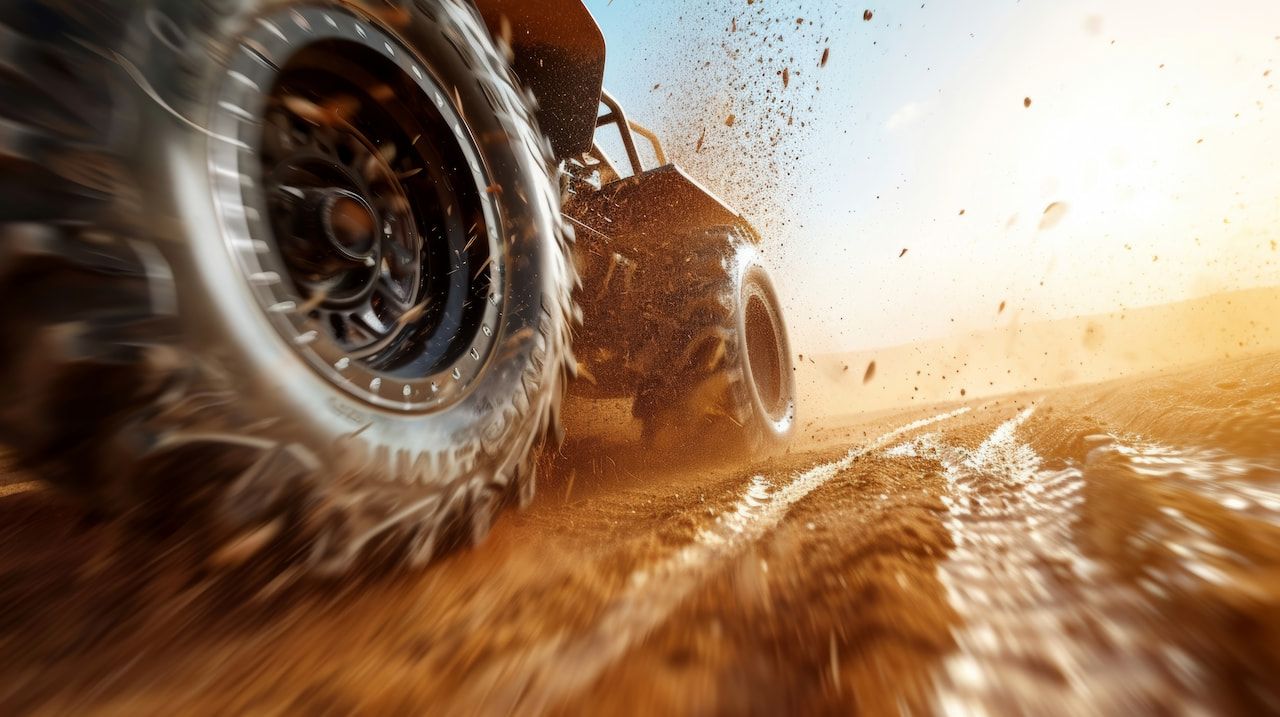UTV owners know the importance of maximizing performance and safety during rides. One often-overlooked factor is tire pressure. Properly adjusting tire PSI based on terrain and load can significantly enhance handling, durability, and overall riding experience. In this guide, we’ll explore the essential strategies for UTV tire pressure optimization.

Understanding UTV Tire Pressure: What You Need to Know
Tire pressure directly affects your UTV’s handling, traction, and tire life. Adjusting PSI allows you to adapt to varying conditions, whether navigating rocky trails, sandy dunes, or muddy tracks.
Learn more about UTV performance modifications.
Common Terrain Types and PSI Adjustments
- Hard-packed Trails
- PSI Recommendation: 12-18 PSI
Hard-packed surfaces require higher tire pressure to maintain stability and prevent tire damage.
- PSI Recommendation: 12-18 PSI
- Sandy Dunes
- PSI Recommendation: 6-10 PSI
Lower pressure increases tire surface area, improving floatation and traction on soft sand.
- PSI Recommendation: 6-10 PSI
- Rocky Terrain
- PSI Recommendation: 8-12 PSI
A balance between flexibility and durability helps navigate sharp rocks without risking tire punctures.
- PSI Recommendation: 8-12 PSI
- Mud
- PSI Recommendation: 6-8 PSI
Lower PSI allows tires to grip better in muddy conditions, reducing the chance of getting stuck.
- PSI Recommendation: 6-8 PSI
Key Considerations When Adjusting UTV Tire Pressure
Explore aftermarket accessories for UTVs.
Factors to Keep in Mind
- Vehicle Load – A heavily loaded UTV requires higher PSI to prevent tire sidewall collapse and ensure safety.
- Tire Type – All-terrain tires have different PSI requirements compared to mud or sand-specific tires.
- Weather Conditions – Cold temperatures may lower tire pressure, so regular monitoring is essential.
- Tire Age and Condition – Worn or older tires may not hold pressure as effectively, impacting performance.
Step-by-Step Guide to Adjusting UTV Tire Pressure
Discover installation guides and modification tips.
- Measure Current Tire Pressure – Use a reliable tire gauge to check the existing PSI.
- Refer to Manufacturer Recommendations – Consult your UTV and tire manufacturer’s guidelines for PSI ranges.
- Adjust PSI with an Air Compressor or Deflator – Add or release air slowly to reach the desired pressure.
- Test the Adjustment – Take a short test ride and observe handling and comfort. Reassess if necessary.
Maintaining Optimal Tire Pressure
Regular maintenance is crucial for keeping your UTV ready for any terrain. Here are some tips:
- Check PSI Before Every Ride: Ensure tire pressure aligns with the planned terrain and load.
- Inspect for Damage: Look for punctures, cracks, or uneven wear.
- Use Tire Sealants: These can provide temporary fixes for small punctures during a ride.
When to Call in the Professionals
Schedule professional UTV services today.
If you notice persistent tire pressure issues, uneven wear, or damage beyond repair, it’s time to consult experts. Side by Side Fury offers professional inspections and repairs to keep your UTV in peak condition.
Main Points to Remember
Optimizing tire pressure for terrain and load is a simple yet effective way to improve your UTV’s performance and longevity. Regular checks, adjustments, and maintenance will ensure you’re ready for any adventure.
For more tips and upgrades, visit Side by Side Fury.
